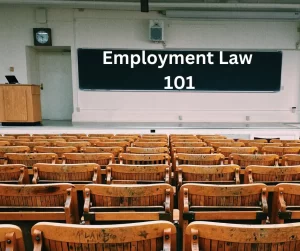
What is a “summons” within the context of legal proceedings? Here’s my point of view.
(IMPORTANT: This article is for informational purposes only and is based upon my point of view. Due to the rapidly changing nature of the law, we make no warranty or guarantee concerning the accuracy or reliability of the content in this article. No content on this site, regardless of date, should ever be used as a substitute for direct legal advice from your attorney. Please review our Disclaimer|Terms of Use|Privacy Policy before proceeding.)
INTRODUCTION: THE SUMMONS
In the sphere of legal proceedings, understanding the terminology and processes involved is crucial to ensuring individuals are well-equipped to navigate the complexities of the legal system. One such term that holds significance in legal circles is “summons.” A summons serves as a foundational element in initiating legal action and warrants a comprehensive understanding. This blog post aims to elucidate the definition of a summons, its purpose, and the key components associated with this crucial legal document.
Definition of Summons
Generally, a summons is a formal legal document issued by a plaintiff, plaintiff’s attorney, court, or authorized judicial entity and served only by qualified individuals/methods. See CR 4(c). Accordingly, the summons serves as a notification to an individual, business/corporation, governmental entity, or other organization informing them that they are being sued or that they are required to appear in court as a party in a legal matter. Essentially, a summons acts as an official call to action, compelling the recipient to participate in the legal process either as a defendant or a witness.
Purpose
The primary purpose of a summons is to ensure that due process is followed in legal proceedings. It provides notice to individuals about their involvement in a legal case, affording them the opportunity to respond appropriately. By issuing a summons, the court system guarantees that all parties have a fair chance to present their side of the case and defend their interests.
Components
A typical summons consists of several key components:
1. Court Information:
This includes the name of the court where the case has been filed. It provides recipients with essential details about the jurisdiction in which the legal action is taking place.
2. Case Information:
The summons includes vital details about the lawsuit including, but not limited to the case number, names of the parties involved, and a brief description of the nature of the case.
3. Date and Time:
The summons specifies the date and time when the recipient is required to appear in court. This is a critical element, as failing to appear on the designated date can result in legal consequences.
4. Response Deadline:
If the recipient is being sued, the summons will include a deadline by which they must respond to the allegations. This could involve filing a formal response or pleading, such as an answer or a motion to dismiss.
5. Contact Information:
The summons typically provides contact information for the court clerk or the legal representative of the party initiating the legal action. This allows recipients to seek clarification or guidance if needed.
6. Legal Warning:
Often, a summons includes a legal warning that outlines the potential consequences of ignoring the summons or failing to respond within the specified timeframe. This serves as a reminder of the seriousness of the matter.
Conclusion
A summons stands as a foundational piece that upholds the principles of due process and fairness. Its role in notifying individuals of their involvement in a legal case cannot be understated. By comprehending its definition, purpose, and components, individuals can better navigate the legal landscape and ensure that their rights are protected. Whether appearing as a defendant or a witness, responding to a summons in a timely and appropriate manner is a vital step in the pursuit of justice.
READ OUR RELATED ARTICLES
We invite you to read more of our articles related to this topic:
» Employment Law 101: Alternative Dispute Resolution
» Employment Law 101: Definition of Pleading
» Employment Law 101: Depositions
» Employment Law 101: Discovery (WA State)
» Employment Law 101: Legal Theory
» Employment Law 101: Mediation
» Employment Law 101: Remedies
» Employment Law 101: Statute of Limitations
» Employment Law 101: Summary Judgment
» Employment Law 101: The Complaint
» Employment Law 101: The Defendant
» Employment Law 101: The Plaintiff
LEARN MORE
If you would like to learn more, then consider contacting an experienced attorney to discuss your case. This article is not offered as legal advice and will not establish an attorney-client relationship with Law Office of Gregory A. Williams, or the author of this article; please refer to our Disclaimer | Terms of Use | Privacy Policy for more information.

